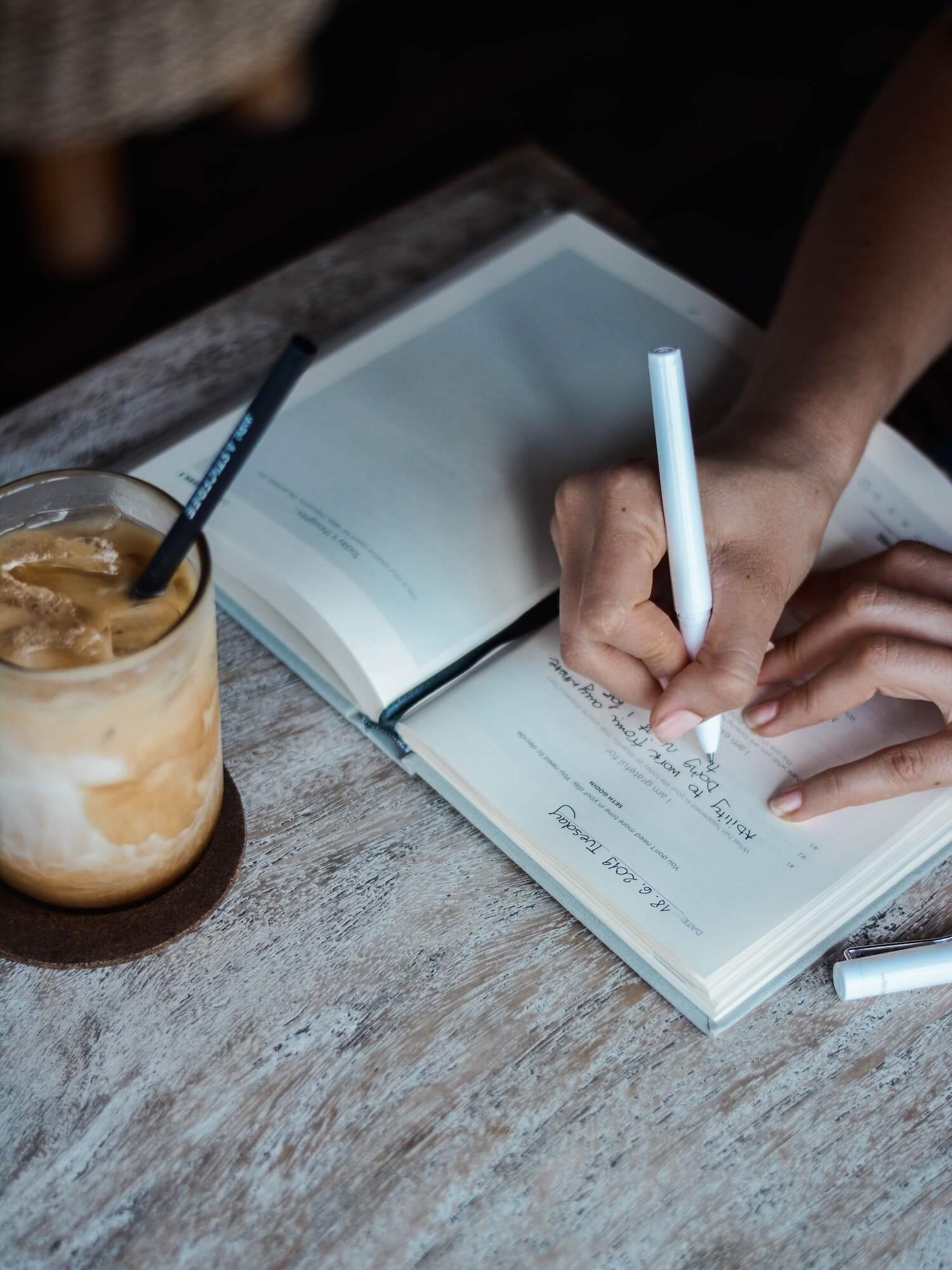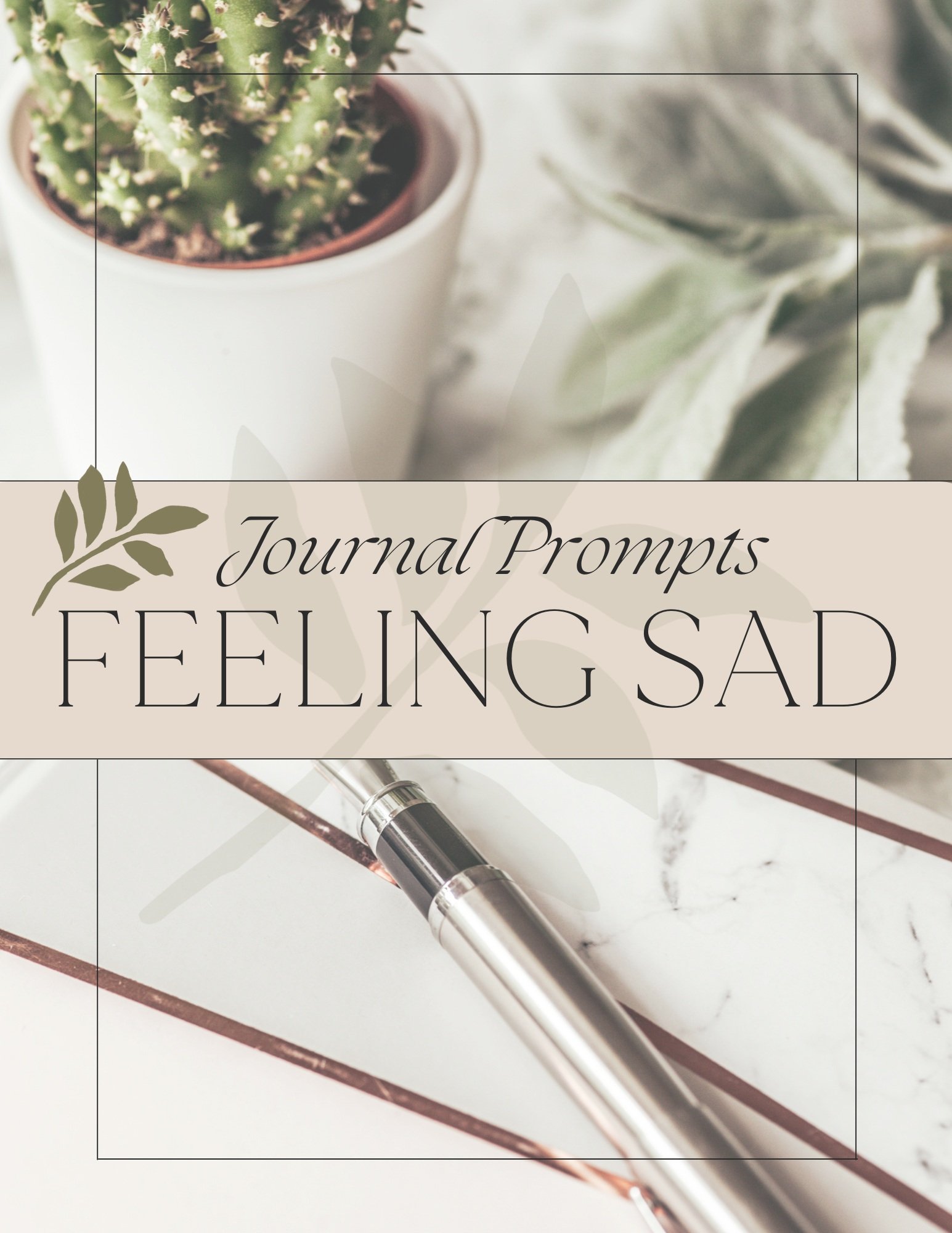11 Things My Gratitude Journal Taught Me (And How To Start Your Own)
This page may contain affiliate links. As an Amazon and Rewardstyle affiliate, we may earn a small commission for any purchases made through these links. Click here for the disclosure statement.
Your day-to-day life can move at such a fast pace that slowing down to contemplate all that you have can feel like a waste of time and a burden at first. However, moments of stillness and contemplation can extend the hours you have in eacb day.
When you’re focused on one task and intentionally working on it, time seems to slow down and take a breath with you. A great way to take a moment of pause in your day and slow down the hectic nature of your life is to journal, specifically by creating a gratitude journal.
Why I Started a Gratitude Journal
I’ll be the first to admit that I suffer from anxiety. My life, in general, should be relatively stress free. I’m able to (for the most part) work on my own schedule and timeline. I get to do something that I love. I’m not chained to a desk all day. But, even so, I found that I was having a high level of stress. Have I mentioned I’m also a perfectionist? Well, if I haven’t, then now is the time to tell you that I am. And, as such, it seems that I’m never quite satisfied with anything that I do. So, that adds to my level of stress. Couple that with a desire to be always learning, growing and expanding? Well, now you have a recipe for disaster!
So, it doesn’t come as any surprise that I’m always looking for ways to lower and reduce my anxiety. I had read about one way to do so—that was, keeping a gratitude journal. The idea intrigued me, since I used to be a kid who wrote everything down in their journal when they were younger.
What Even Is Gratitude?
Before jumping into how to create your gratitude journal and how it can help your life, let’s define gratitude. Oxford Languages defines gratitude as: “the quality of being thankful; readiness to show appreciation for and to return kindness.” This definition gets into the purpose of exploring gratitude. When you give thanks and appreciate what you have, you also make room to give to others in return. Gratitude is about filling your cup up with positivity and good feelings before you expend your energy to help others.
It’s more than being happy with what you have. It’s about acknowledging the good in your life. Even if you don’t have everything you want or need, gratitude teaches you how to appreciate what do you have and chase your goals from there. It’s not about settling. It’s about creating a healthy foundation to move forward.
What If I Don’t Have Anything to be Grateful For?
When you’re in a bad headspace, it can feel like you have nothing to be grateful for. However, the great thing about gratitude is that anyone can practice it. Even if you don’t own a single thing or don’t have a single person in your life to turn to, you can be grateful that you get to breathe. It doesn’t have to be a large thing that you’re grateful for—often the most important things to show gratitude for are the smallest. If you can’t scour your brain for anything that you’re grateful for, look up gratitude prompts online to inspire you.
How to Start a Gratitude Journal Practice
Get the idea of gratitude? If so, it’s time to get started making a gratitude journal practice that works for you and becomes an integral part of your daily routine. The idea of a gratitude journal is simple: Make a short journal entry of the positive things in your life.
It doesn’t have to be long. In fact, most of my entries are pretty short. I like to focus on writing down three things each day that were positives. I try to keep them relatively specific (ie: “I felt really good about …(insert thing)…today.”) and focus on different items each day. There’s always a positive to be found in each day…if you’re willing to look. I find that far too often we focus on the negative things throughout the day and let that set the tone for the rest of it. A daily gratitude practice can help you break this cycle of negative thinking.
Everyone’s gratitude practice may look a little different. You can choose to actually journal and write down the things you’re grateful for on paper or type them out electronically. You could also say them out loud or in your mind. Gratitude can be a great addition to a meditation practice. Starting with a few things you’re grateful for can quiet your mind for the rest of your practice. Your gratitude practice can look as messy or as put together as you want it to be, but here are a few tips that can enhance your practice.
21 Day Self Reflection Journal
A perfect complement to any morning routine. Avoid picking up your phone and swiping and, instead, reach for this journal and spend the first 30 minutes of your day looking inward and starting the day, rested, composed, and grateful.
Get a Designated Journal
Treat yourself to a blank journal to start your gratitude journey. This doesn’t have to be anything fancy; a plain spiral or composition notebook will work just fine. The goal is to have a specific journal dedicated to gratitude so that you don’t get distracted by the other notes and thoughts you’ve written down prior. Each blank page is yours to fill with gratitude and look back on as you progress through this journey.
Build Your Atmosphere
Create a place that’s cozy and facilitates gratitude. This may be with a comfy blanket wrapped around you, a spot out in nature, or just in your bed. Find a place that helps you relax and think of what you’re grateful for.
What Keeping a Gratitude Journal Has Taught Me
The things a gratitude journal will teach you are unique and will vary from person to person, impacting different parts of your life. Take a personalized approach to journaling and see what you can get out of it—better understanding your mental health and focusing your energy on your goals and the positivity in your life. Gratitude journaling has taught me an abundance of lessons that I continue to keep with me, including the following positive thoughts.
Take Time for Yourself
The great thing about journaling, whether you like to write it down with pen and paper—or on a keyboard—is that it allows you to take some time during the day for yourself. I have a hard time stopping to sit still, but I find that setting aside 15 minutes throughout the day takes my mind off of many of the things that are going on. These little chunks might not seem like much, but consciously making an effort to take time for yourself plays a huge role on your emotional state.
Focus on What Really Matters
Sometimes, you just feel like the world is out to get you. Or, sometimes you feel as though there’s just too much going on and you don’t know where to begin. That overwhelming feeling is something that I know all too well. I find that breaking down the day into small, positive chunks helps me see what mattered most throughout the day and what was just noise.
See the Good in Each Day
When we feel overwhelmed, it’s more likely that we focus on the things that are causing that overwhelming feeling. Rarely do we find ourselves overwhelmed by positive emotions (although it does happen!); instead, we focus on the negative. Breaking down the day allows me to really process and analyze events as they were, not how I had built them up to be.
Gain a New Perspective
Have you ever been really upset by something and then, when you’re presenting the ideas to your friend and saying them out loud, they don’t seem so bad? Sometimes, just saying something out loud (or writing it down) allows you to gain an entirely new perspective on an issue that you didn’t see before. Gratitude journals are a place for all things positive that happened throughout the day, but even negative things can be turned into something positive.
For example, instead of: “A client cancelled on me and I didn’t make a sale,” I could shift my perspective and make it a positive, “My client cancelled on me and I was able to fit in time for a project I’ve been putting off. I’m so grateful that I have such a flexible schedule.” In the moment, I made the decision to use my free hour to work on something that was on my to-do list. But looking back later, I realized that was quite an unexpectedly nice turn of events. It’s all a matter of perspective!
Identify the Negatives and Cut Them Out
Even though a gratitude journal is all about positive things, it will soon become apparent which things are not making it into your journal. Whether that is your job, your friends, or your partner, the lack of mention of these items will become evident. Consider reading back through your journal weekly to see if you can pinpoint which things/people you wrote about, and which ones didn’t make the cut.
Reflect On Past Days When You Feel Down
Looking back on past days is really fun, but even more so when you’re feeling down. It always helps me to read back through a really good day and shift my attitude towards the current day, especially when I’m feeling low. It reminds me of all the good things that are in my life and the things that I’m thankful for. And remember: this is a journal for you! Your eyes only, so you should never feel pressure to edit yourself!
What Are the Benefits of Gratitude Journaling?
Gratitude journaling can play a role in various parts of your life. From helping you achieve your dreams to changing the way you approach and think about your life, it can have a large impact that’s unique to you. Some of the overarching benefits I’ve found from gratitude journaling and that I’ve heard others mention are:
Better Mental Health
Gratitude can have a positive impact on your mental health. It’s easy to focus on what we don’t have and grow anxious and sad about all that we haven’t done or don’t own. Gratitude can help you take note of what you do have in your life, so that you can find a moment of content and peace, appreciating your life for what it has given to you, rather than what it’s taken away.
Gratitude has been shown to actually change the brain’s chemistry. Fight the stress of daily life by committing to a practice that can positively impact how you view the world and can actually change your brain, allowing you to feel happier and more content.
More Positivity
Gratitude can help you feel and act in a more positive fashion. Genuinely positive and happy people are great to be around. By sticking to a gratitude practice that helps you enhance the positivity in your life, you can act as a better friend to others. Your empathy for your friends, family, and strangers will grow, and overall, your efforts toward increased gratitude will help you socially.
Helps You Tackle Your Goals
Goals can feel overwhelming, especially when they don’t pay off right away. You may start noticing how other people are achieving the goals that you want to achieve—you may even feel spiteful because of it. Gratitude can help calm these racing thoughts in your brain and remind you of all that you have. This, in turn, can help you fill up your cup so that you’re motivated to go after these goals. Since you will have recounted what you have and what’s truly important, you’ll feel less effected by what others have, allowing you to stay on course with what you want out of your life and the goals you’ve set in place for yourself. .
Better Sleep
Gratitude can actually help you to get better sleep. This is, in part, due to its ability to lower your anxiety and stress levels. Ever find yourself staying up late at night worrying that you’re not doing enough or that you’re forgetting to do something? Gratitude can help pull you back down to the present and ground you in the positives of your current situation.
Gratitude is an act of kindness to yourself. You may find that after you complete your gratitude entry for the day, you have that same warm, fuzzy feeling you get from helping someone else. That’s because you’re showing kindness to yourself!
Acts of kindness activate and regulate the hypothalamus, which plays a role in regulating your sleep. Studies have shown how these little acts of kindness can, over time, lead to improved sleep. If you feel like your sleep isn’t at the quality you want it to be, pull out your gratitude journal as part of your nightly wind down routine.
Feel Accomplished
The act of creating a gratitude journal and sticking with it can help you on days when you feel as though you’ve done nothing good for yourself. This is a habit that’s small but mighty, and it can give you that feeling of accomplishment—in both an easy and accessible way. Looking back on your gratitude lists can also remind you of all that you’ve accomplished, rather than all that you lack. This will quickly give you a new sense of accomplishment and help you to clear away those negative daily thoughts that may seep unconsciously into your brain.
How to Stay Consistent with Your Journaling?
Starting a new habit can be rough. At first, you might have all the motivation in the world to tackle your new goal full force. However, the hustle and bustle of life can set in, letting these new habits slip onto the back burner of your mind. In order to continue keeping a successful gratitude practice, you might have to take actionable steps to keep moving towards the future you envisioned.
Here are a few tips and tricks I use to stay on top of my gratitude practice even when I have no motivation to pick up the pen.
Set a Reminder
One of the biggest issues that I have with maintaining consistency on anything is that I don’t make time for it. Without a reminder, it’s easy to say, “Oh, I’ll get to it later!” and then I never really do. Setting a daily reminder—even better if it’s the same time every day—will help you to create a routine that you can continue. The more that something becomes a habit, the more likely you are to stick to it. And let’s be honest, we could all use a daily dose of positivity!
Keep Your Journal Close to You
I personally like to journal in my down time during the afternoon, but another good time to do it is right before bed. For one, it’s easy to leave a journal by your bedside table. This way, you can finish your day as it is winding down, so you never miss anything. It also helps to get those final thoughts out before you head to bed. I find that I sleep better (and wake up more rested) when I feel as though I’ve reconciled everything in my brain for the night.
Don’t Put a Time Limit on Your Journal
When I’m journaling, I like to write down at least 3 things that happened that were positive to me that day. However, many times, when I’m writing, I find that one thought leads to another and then another. Suddenly, I might find that I’ve written half a page of good things! So, don’t make it stressful—write as much or as little as you like each day. It’s freeform and, as I mentioned earlier, it is for your eyes only. The same goes for the content! If you want to write in quick little dashes, do so! Make a list! Write paragraphs! Whatever you are feeling that day is all that you need to do. No more, no less.
Take Note of What You Have
Gratitude can be a great way to check back in with yourself each day. You don’t have to have a lot or have met all of your goals in order to begin a gratitude journal. That’s the beauty of it! It can help anyone trying to better themselves, and in turn, help others get on a path to success. It’s a small habit that doesn’t take much time, energy, or money, making it the perfect goal to add into your life without added hassle. So start taking action of your life by focusing on the good with a gratitude journal!

















